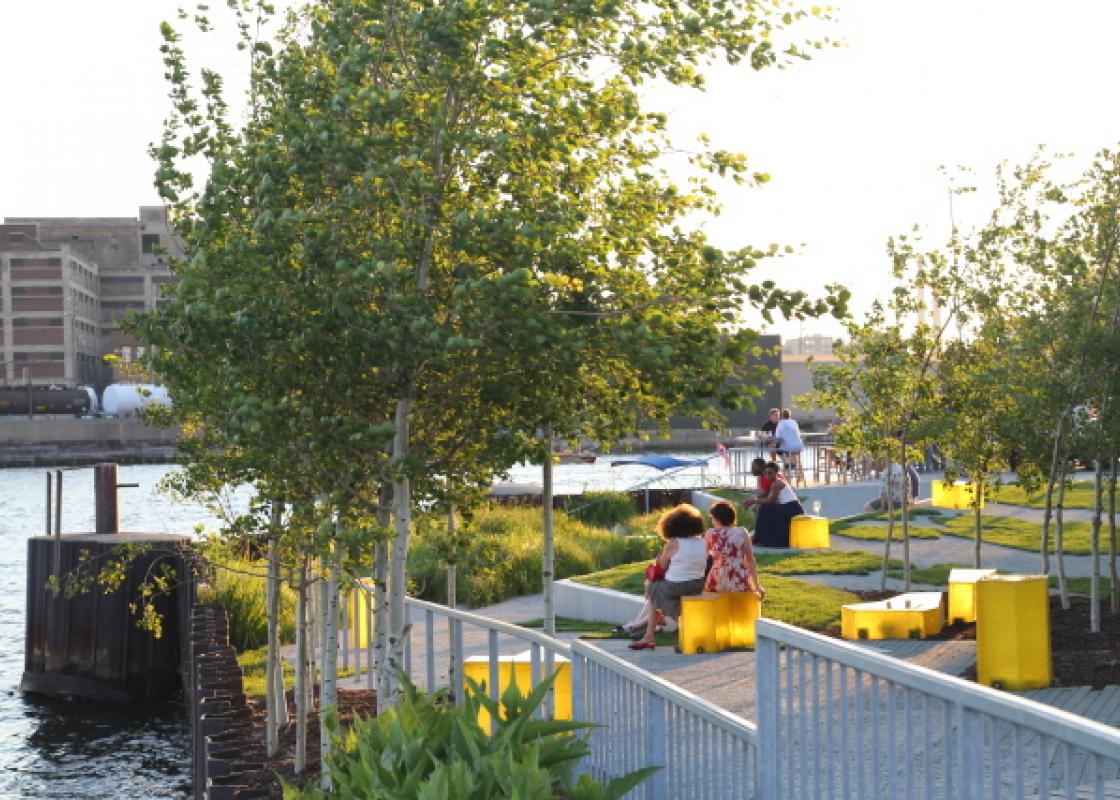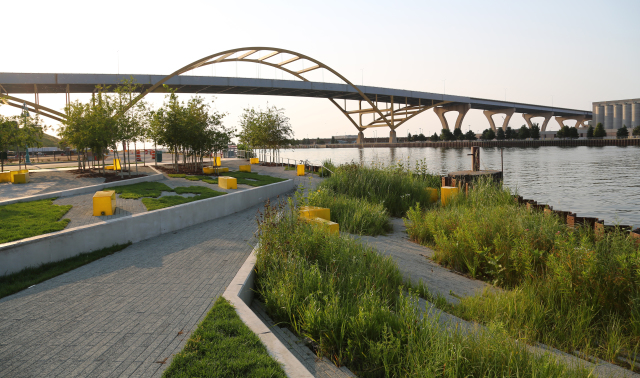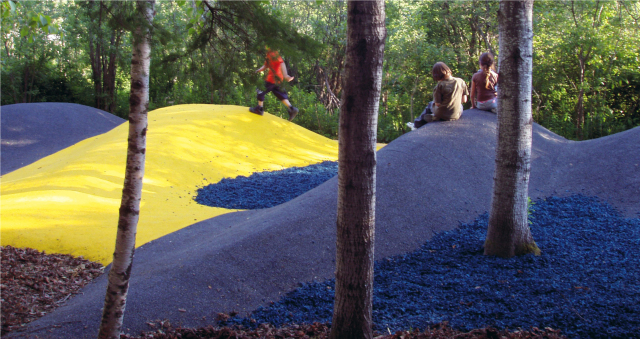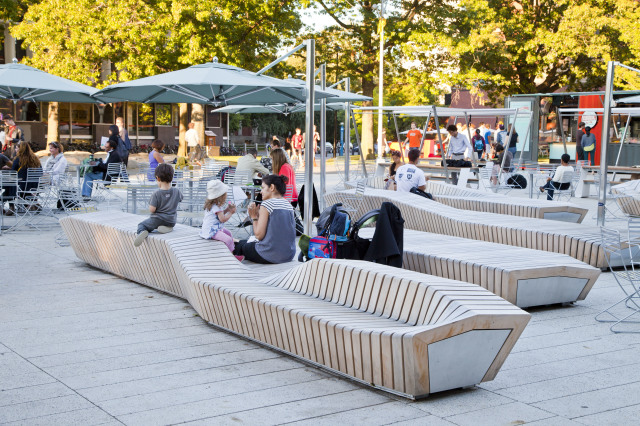Here, Oliver and Veras respond to the first lecture in the Rice School of Architecture/Rice Design Alliance Series, Projective Infrastructures. For more about the series, watch this preview video. The next lecture will be Christophe Girot on Wednesday, February 10. Join the event on Facebook!
At first, the way Stoss founder Chris Reed described the firm’s work was familiar to anyone acquainted with conversations over the past 20 years around landscape urbanism and ecological urbanism. His introductory rhetoric was one of accommodation and flexibility. Rather than seeking to control a landscape that is set in opposition to human settlement, Stoss “start(s) with landscape,” Reed said, seeking to weave inhabitation and ecology into a symbiotic whole, where the capacity to adapt to, and to accommodate, both human use and the inherent instabilities or “dynamic flux” of ecological systems is more highly valued than the establishment of a “stable situation in an unstable environment.”
With their Erie Street Plaza project in Milwaukee, for example, Stoss uses a series of gently sloping planes that both collect storm water for irrigation and restore natural drainage patterns toward the Erie River, where runoff is cleaned by new marshy plantings at the water’s edge. These simple planes composed of pavers and grass, which are explicitly “not programmed,” provide a flexible field that supports many different uses without explicitly prescribing them. It is a hands-off approach to inhabitation that invites the unexpected, where a sense that many things could happen is presumed to ensure that some do. Accommodation begets a sense of freedom and choice, which in turn begets “activation” of public space.
With the treatment of these planes, the Erie Street Plaza project typifies the link between form and ecological and social goals in Stoss’ early work, as a specific formal vocabulary of smooth surfaces and gentle slopes is employed which has to with accommodating transversal - with allowing people and water to move across and through it. The evolution of Stoss’ work, however, shows the potential for the language of easy movement and flexibility to undergo a kind of genetic mutation into something that actively provokes participation.
You can see this clearly in the Safe Zone garden installation in Quebec, composed of a kaleidoscopically colored, undulating topography of poured-in-place granulated rubber, as you might see on playground surfaces. At first, Safe Zone seems a re-interpretation of the gently modulated groundscapes seen elsewhere in Stoss’ work, with every dimension miniaturized except for the height.
The most striking thing about Safe Zone, though, is the way the rolling topography explicitly problematizes movement rather than accommodating it . Yet its squishy surface nevertheless invites exploration, preventing the hilly forms from presenting as sculptural or visual media. Rather than simply providing a set of conditions that support many different kinds of behavior, the installation displays a novelty of form and material that directly elicits an active bodily response and a desire to explore and interact --- that, in short, encourages “play.” This, then, is a model for a landscape that attempts to manufacture, or multiply, the unexpected rather than simply providing for it.
Reed alluded to this with his notion of “performance,” where form is employed as a way to catalyze or generate behavior rather than simply organize it. Here, form per-forms. This terminology was paired with an anecdote that served to illustrate the point, as Reed described walking hurriedly and directly over a series of hills, forgoing the meandering path along a river. In traversing the landscape in a way that one is not “supposed” to, a multitude of possibilities for circulation, view, and activity opened up to him.
These possibilities were set in contrast to the tightly choreographed meandering path framed by the hills. But they are also fundamentally different from the definition of flexible, adaptable space that characterized Stoss’ early work. It would be hard to argue, in other words, that the rolling hills of Safe Zone can be occupied in more ways than the Erie Street Plaza. The former is, however, more challenging, and it demands more of its users in terms of direct and active participation. It solicits discovery. It actively “activates.”
Here, the risk is, of course, that the collective energy produced through the appropriation of novel forms by users might at some point simply give way to a static catalog of accepted “ways of being” --- that these forms become a way of curating a set of performed transgressions. The sculptural benches at Harvard Plaza, their unfamiliar shapes designed to encourage all kinds of nontraditional sitting behaviors, might simply slip into a comfortable middle age as everyone “finds their place” --- and then stays there.
Yet when we think about the hill at Discovery Green, it’s tough to be cynical about the potential of “generative form.” While the absolute number of things that can be done there is probably lower than at the adjacent lawn, the simple fact of its slope creates a very effective social condenser, where the young and the young-at-heart share a common experience of negotiating an unfamiliar territory together, and where invention of new forms of inhabitation can be invented and shared. In Houston, where it is not open space per se that is at a premium, but rather places with the capacity to attract and condense inhabitation to such a degree that real interaction can begin to take place, the notion that landscape form might do more than simply accommodate or choreograph movement seems to hold real promise.













